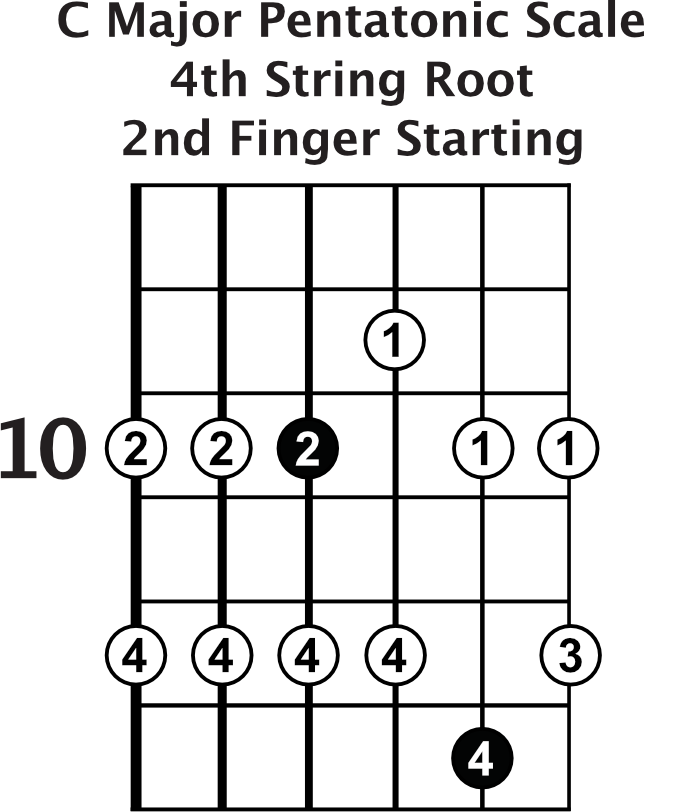In this lesson, we are going to look at starting to navigate between your fundamental pentatonic scale shapes. Many guitarists learn a pentatonic scale shape or two but never really get to the point where they can flow between them up and down the fretboard. This lesson will be great if you’ve been struggling with this.
Throughout this lesson we will go over two basic major pentatonic scale shapes, their root note locations, and two ways that you can start moving between them. I also have a jam track for you in the key of C major so you can apply everything we go over here.
To get started I want to make sure that you know the two major pentatonic scale shapes that we will be using in this lesson. Here are the scale shapes for you. It’s important to not only have the shapes down but the root note locations memorized as well.

It’s great to be able to visualize the chord shape that goes with the particular major pentatonic scale you are playing. Here are the diagrams that show which chord shape goes with each pentatonic scale shape.


Let’s get into the two pentatonic scale navigation tips. The first one involves sliding from the first shape up to the second shape. We will go over two basic ways of doing this. The first way involves playing six notes of the first scale shape and the sliding up to the next scale shape. You can check it out in the TAB below.

The next sliding example uses a little five note mini shape. Check out the diagram and TAB below for a great example of how this works.


Many players get stuck in ascending through pentatonic scales. Being able to descend through these scales is important too. The second way to flow between these pentatonic scales has to do with descending and shifting from one shape to another. Check out the video for a few examples of how to go about this.
Now that we’ve gone over the scale shapes and some basic ways of navigating between them it’s time for you to apply what you’ve learned to some real music. Be sure to download the jam track and use it to work on the scales and concepts we’ve gone over in this lesson. It's in the key of C major so you can experiment as much as you like with all five basic pentatonic shapes.

